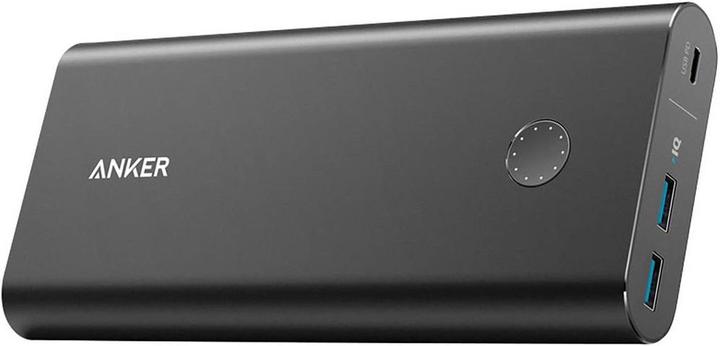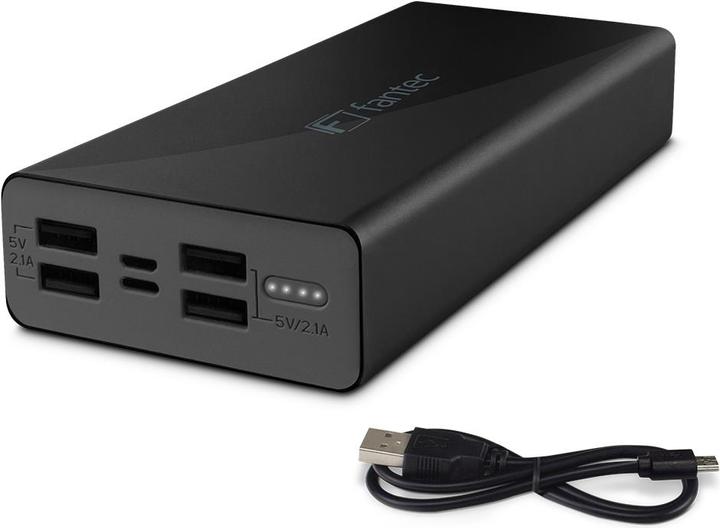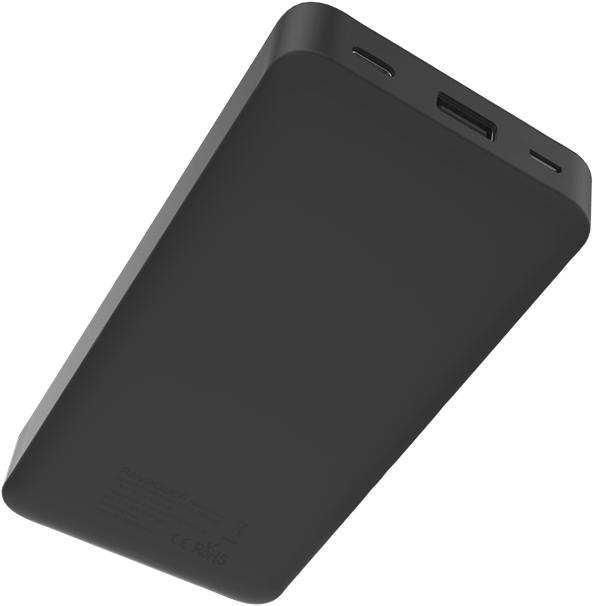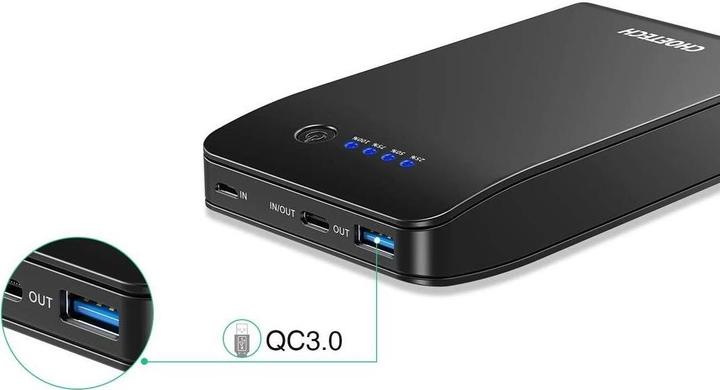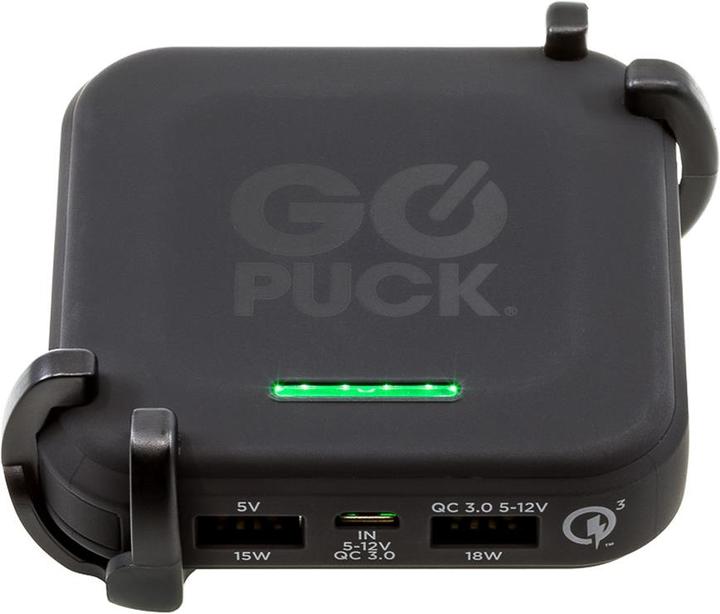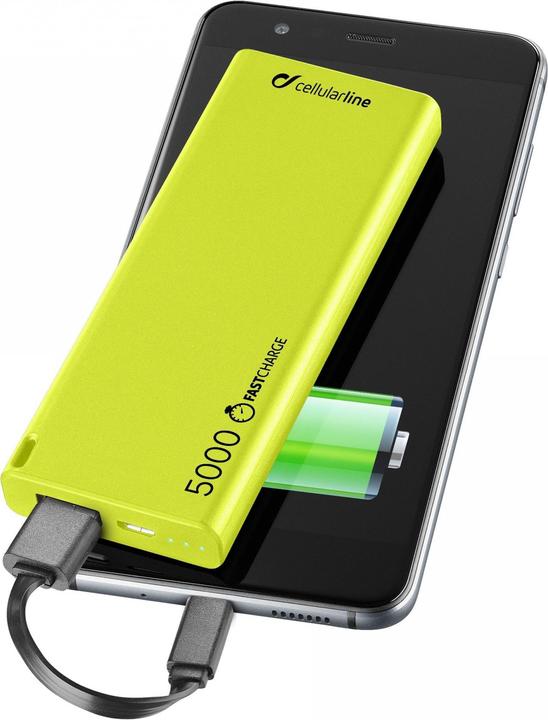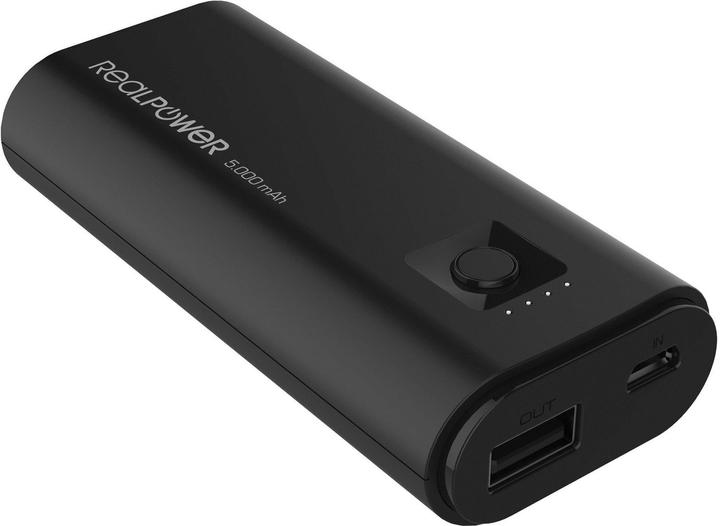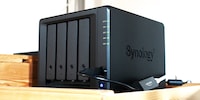

Which power bank really has power?
Are power banks really as powerful as their specs suggest? We tested 19 external batteries to find out if they live up to their promise.
We, that’s our Community member Lucas and myself. Lucas contacted me after he read my article about a power bank from Italy. He was planning to buy a power bank from us – not just any model but the best one out there. Lucas suggested borrowing several products from us, measuring their output, sending them all back and buying the one he liked most.
What didn’t work about this idea was having to pay the postage for every power bank he returned. He would have liked to write about his experience, but his mother tongue is English and his German isn’t good enough yet to write an article. I read his message and said: don’t worry, I’ll take care of the writing part.
This is how it came about that Lucas did all the behind-the-scenes work for this article. As a reward for his efforts, he’s allowed to keep the power bank of his choice. I'm curious to see which one it will be.
Here’s a warning: this article treats the subject in great detail. If you’re interested in the results but not how we reached this conclusion, jump straight to the last paragraph.
The products in the spotlight
We put at a total of 19 power banks to the test:
- six giant ones with about 26,000 mAh (approx. 100 Wh)
- five large ones with 20,000 mAh (75 Wh)
- four medium-size ones with 10,000 mAh (37.5 Wh)
- four small ones with 5,000 mAh (19 Wh)
We chose most of them because they're either bestsellers or have particularly good ratings. A few low-cost and a few high-end models are also included.
The testing method
Lucas worked with a man-in-the-middle measuring device, just like the one I used with the power bank from Italy. His model is much better though; it also boasts Quick Charge 2.0, Quick Charge 3.0, Apple charging and USB-PD.

- Before testing begins, all power banks were fully charged.
- Discharging was done with 1 A and 2 A and a standardised load.
- All supported fast charging techniques were tested.
- All power banks were charged with a USB-A power supply that delivers 2 amps.
- The power banks were charged as fast as possible. For this, a USB-PD Satechi travel charger and a quick charge Xiaomi charger were used.
- The test was repeated if the results were strange.
The raw data of each power bank is listed below the respective product.
Glossary and a bit of theory
It might be simple to use, but the details of USB are rather complex. To start with, much confusion is caused by the distinction between the USB protocol and USB connector types. The protocol defines how and with which coding communication takes place. It also determines the speed at which data is transferred and which connectors are allowed.
For us end users, the connections are key. Unfortunately, the same connector type behaves differently if the chips it features are only capable of a certain USB protocol. The same device with the same cable doesn’t work the same way on different USB-A ports. Why? Because USB connector types are derived from precisely defined versions of the USB protocol. USB also dictates the voltage (Volt) and the amperage (Ampere) with which devices are supplied with power. (If you multiply volts × amps, you get the power in watts.)
USB-A: The voltage is 5 volts, the current may be up to 2 amperes (10 watts).
USB-A: The voltage is 5 volts, the current may be up to 3 amperes (15 watts).
USB-PD: PD stands for «Power Delivery» – transfer of energy only, no data. USB-PD isn’t a standardised connector such as USB-A and USB-C but an additional protocol. It can use both connectors, which can then supply more than 5 volts. USB-PD handles voltages up to 20 volts and can deliver up to 5 amperes. This means, USB-PD has a maximum output of 20 volt × 5 amperes = 100 watts.
Quick Charge: This is a fast charging solution developed by Qualcomm. Quick Charge 2.0 and Quick Charge 3.0 are most commonly used, both delivering up to 18 watts. Quick Charge 4.0 (2017) can deliver up to 28 watts, but it’s not used often yet.
In addition to these, there are several proprietary solutions: Huawei with Supercharge, Oppo with VOOC, Oneplus with Dash Charge (a modified version of VOOC), MediaTek with Pump Express and Apple with Lightning. All these technologies use the USB interface, but outside the specifications. That's why they have built-in mechanisms that ensure standard-compliant devices are not damaged by excessive currents and voltages. This is achieved by means of a chip in the cable that detects whether a compatible device is currently attached to the cable or not. If you want to use one of these proprietary solutions, stick with original accessories or certified products such as Apple MFi.
Fast charge is a generic term that allows a power bank to charge particularly fast. What’s important to keep in mind is that a power bank doesn’t only charge other devices, it also wants to be charged itself. This means, it’s not enough to look out for how fast the power bank charges other devices. Also check how long it takes to recharge the power bank itself. 2 amps at 5 volts – 10 watts – is what every power bank can do. A very large power bank with 100 watt hours takes 10 hours to recharge to 100%.
The larger the power bank, the more important fast recharging gets. This works if the power bank supports USB-PD. Lucas also measured this data for all power banks. If this is important to you, take a look at this information on the graphics below – more than one manufacturer doesn’t deliver what it promises.
The 19 power banks that were tested

Output
1 × USB-A at 2.4 A
1 × USB-A QC 3.0 (18 W)
1 × USB-C USB-PD (30 W)
Input
1 × USB-C (28 W)
1 × Micro-USB (10 W)
Fast charging technologies: QC 2.0, QC 3.0, USB-PD
Battery status: LEDs with 25/50/75/100% indication
Accessories: USB-C cable
Conclusion: The PB-Y7 is advertised with 30,000 mAh (111 Wh). That’s 10% more capacity than the next smaller power bank, in theory. Our measurements show that the PB-Y7 delivers results that may be consistently good but not 10% above the others.
Attention: You’re not allowed to board a plane with this power bank. Airlines such as Swiss allow a maximum of 100 Wh for lithium-ion batteries. It's possible it will be taken away from you at check-in if a security guard looks very closely.
Output
3 × USB-A at max. 2.4 A, all together max. 3 A
1 × USB-C PD (max. 45 W)
Input
1 × USB-C PD
Fast charging technologies: USB-PD
Battery status: LEDs with on/off button and 25/50/75/100% indication
Accessories: USB-C and Micro-USB cables in side pockets included.
**Conclusion: ** In our test, fast charge was slower than slow charge: the power bank used USB-PD at 15 V with only 0.5 A (7.5 Watt) – compared to 5 V with 2 A (10 Watt) in «slow» mode. We tried a second XB203. We repeated the tests with various cables and power supplies that are capable of delivering much better results. We were so desperate that we even used the other power banks as power supplies. One single time we measured 30 watts. Twice we saw 18 watts.
We asked Xtorm and they said they weren’t aware of any errors. They recommended we use their very own and rather expensive 60 watt CX024 power supply. But even with that, we were unable to charge two power bank models with more than 10 watts.
This power bank has problems with many commercially available USB-PD power supplies, even those produced by the same manufacturer. If you want to charge it extra fast, you'll usually achieve the opposite. This product doesn't work as it should. I advise you to stay away from the Xtorm XB203.
Raw data for the Xtorm XB203 Infinity
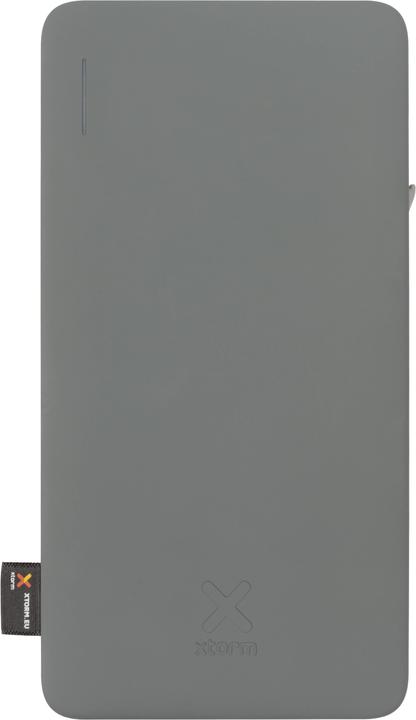
Xtorm XB303 Voyager
26000 mAh, 60 W, 93.60 Wh
Output
2 × USB-A 18 watt Quick Charge 3.0
1 × USB-C at 15 watt
1 × USB-C PD at 60 watt
Input
1 × USB-C PD at 60 watt
Fast charging technologies: QC 2.0, QC 3.0, USB-PD
Battery status: LED charging bar with 25/50/75/100% indication
Accessories: 2 × USB-C to USB-C, 1 × USB-A to USB-C
Conclusion: This power bank was presented in August 2018. From a technical point of view, it’s by far the most modern device – and Xtorm isn't sparing any expenses to ensure this. Unlike its predecessor, the XB303 has no charging deficiencies. It's the only power bank in our test that supports all Quick Charge and USB PD modes without any problem. On top of this, it charges with incredible speed – so fast that it competes with the small 5,000 mAh power banks in terms of charging speed.
Raw data for the Xtorm XB303 (26000)
Output
3 × USB-A at 3 A
Input
2 × Micro USB-A at 2 A
Fast charging technologies: PowerIQ, a custom development by Anker, which is supposed to be compatible with Quick Charge and USB-PD.
Battery status: LEDs with 25/50/75/100% indication
Accessories: two Micro USB cables, transport bag
Special features: This model can be charged very quickly with two inputs at the same time and 4 A (20 watts)
**Conclusion: ** We could only load this power bank with a maximum of 15 watts (5 V at 3 A). The compatibility of PowerIQ with Quick Charge and USB-PD doesn’t seem to work properly with this model.
Raw data for the Anker Powercore (26800)
Output
2 × USB-A at 3 A
1 × USB-C (30 W)
Input
1 × USB-C (27 W)
Fast charging technologies: PowerIQ, a custom development by Anker, which is supposed to be compatible with Quick Charge and USB-PD.
Battery status: 10 LEDs around on/off button
"Accessories:* USB-C cable
To be noted: Charging with a USB-A power supply was extremely slow; the power bank wouldn't allow more than 0.5 A at 5 V. This results in a charging time of over 15 hours. Anker correctly describes this on their own website: «Standard phone chargers may only provide a slow charge or could be completely incompatible». At least they’re honest. However, other power banks have less trouble consuming a meagre 10 watts with commercially available power supplies.
The implementation of Power IQ is better than in the version without «+». The Power bank delivers 15 W, 18 W and 30 W.
Raw data for the Anker Powercore+ (26800)
Output
4 × USB-A at 2.1 A
Input
1 × Micro USB
1 × Lightning (!)
Fast charging technologies: none
Battery status: LEDs with 25/50/75/100% indication
Accessories: Micro USB cable
Conclusion: Although it's extremely affordable, the Fantec is the Hulk among power banks: big and stupid. This power bank can neither charge other devices quickly nor can it be charged quickly itself. Even the packaging is green.
Raw data for the Fantec RBP-240H
Output
1 × USB-A at 2.1 A
1 × USB-A at 1.0 A
Input
1 × Micro USB-A at 2.0 A
1 × USB-C-A at 2.0 A
Fast charging technologies: none
Battery status: LCD screen with numeric display
Conclusion: Charging is only possible with USB-A (10 watts). Strange that a power bank of this size doesn't support USB-C or USB-PD. And annoying that one of the USB-A outputs only delivers 5 watts. The integrated flashlight doesn’t compensate for these flaws.
Output
2 × USB-A at 3 A
1 × USB-C-A at 3 A
Input
1 × USB-C
Fast charging technologies: PowerIQ, a custom development by Anker, which is supposed to be compatible with Quick Charge and USB-PD.
Battery status: 10 LEDs around on/off button
Conclusion: Just as the 26,800 mAh model, this power bank offers unsatisfying support for fast charging technologies. We could also only load it with a maximum of 15 watts (5 V at 3 A).
Raw data for the Anker PowerCore+
Output
2 × USB-A at 2.4 A
1 × USB-C-A at 3 A
Input
1 × Micro USB with QC 3.0
1 × USB-C
Fast charging technologies: QC 2.0, QC 3.0
Battery status: LEDs with 25/50/75/100% indication
Accessories: case, Micro USB cable, USB-C charging cable
**Conclusion: This power bank is only capable of Quick Charge 3.0 in theory. We could only charge devices with 18 watts (QC 2.0). It's the only power bank we tested that features pass-through charging: it can be charged and discharged simultaneously. It's a shame that it only has one USB-C port.
Raw data for the Ravpower PB043
Output
1 × USB-A at 3 A
1 × USB-C-A at 3 A
Input
1 × Micro USB-A at 2 A
1 × USB-C-A at 2 A
Fast charging technologies: QC 2.0, QC 3.0, USB-PD
Battery status: LEDs with 25/50/75/100% indication
Accessories: Micro USB charging cable, USB-C charging cable
Special features: Fast charging was possible via USB-PD but didn’t work with QC 3.0.
Raw data for the Ravpower PB095
Output
1 × USB-A at 2 A
1 × USB-C-A at 2 A
Input
1 × USB-C-A at 2 A
1 × Micro USB-A at 2 A
Fast charging technologies: QC 2.0, QC 3.0
Battery status: LEDs with 25/50/75/100% indication
Accessories: Micro USB charging cable, USB-C charging cable
Conclusion: The power bank charges with QuickCharge 3.0 or USB-PD.
Raw data for the Choetech B613Q
Output
2 × USB-A at 3 A
Input
1 × Micro USB-A at 2 A
Fast charging technologies: PowerIQ, a custom development by Anker, which is supposed to be compatible with Quick Charge and USB-PD.
Battery status: LEDs with 25/50/75/100% indication
Accessories: Micro USB charging cable
Conclusion: This Anker model performs even worse than its big brothers and offers no fast charging.
Raw data for the Anker PowerCore (10400 mAh)
Output
2 × USB-A at 1 A
Input
1 × Micro USB-A at 2 A
Fast charging technologies: none
Battery status: LEDs with 25/50/75/100% indication
Accessories: Micro USB charging cable
Special features: torch function (with flashing mode, for whatever reason)
Raw data for the ADATA PowerPack PT100
Output
1 × USB-A at 2 A
Input
1 × Micro USB-A at 2 A
Fast charging technologies: none
Battery status: LEDs with 33/66/100% indication
Conclusion: This device is advertised with fast charge, although it takes up a maximum of 10 watts, which isn't more than any other power bank. Exaggerated performance data is printed on the packaging: «Charges your smartphone 8x» – which smartphone has a battery with a measly 1250 mAh? Even a Nokia 8110 battery is better than that.
Raw data for the Cellularline Freepower Slim
Output
1 × USB-A at 2.4 A
1 × USB-A with QuickCharge 2.0/3.0/4.0 (max. 18 watts)
Input
1 × Micro USB with QuickCharge (max. 18 watts)
Fast charging technologies: QC 2.0, QC 3.0, QC 4.0
Battery status: LEDs with 25/50/75/100% indication
Accessories: Micro USB charging cable, «Active Mount» that holds power bank in place.
**Conclusion: ** This is the only device in our test that supports QuickCharge 4.0 – according to the data sheet. In reality, the Go Puck doesn't even support all QC 3.0 modes. We could only get 18 watts out of it.
Output
1 × USB-A at 2.1 A
Input
1 × Micro USB at 2 A (successor apparently with USB-C connection)
Fast charging technologies: none
Battery status: LEDs with 33/66/100% indication
Accessories: Micro USB charging cable
To be noted: This device is advertised with fast charge although it only offers conventional USB.
Raw data for the Cellularline Freepower Slim (5000)
Output
1 × USB-A at 2 A
Input
1 × Micro USB-A at 2 A
Fast charging technologies: PowerIQ, a custom development by Anker, which is supposed to be compatible with Quick Charge and USB-PD.
Battery status: LEDs with 33/66/100% indication
Accessories: Micro USB charging cable
To be noted: Although Anker promises it, this device doesn’t support fast charging.
Raw data for the Anker PowerCore (5000)
Output
1 × USB-A at 2.1 A
Input
1 × Micro USB-A at 2.1 A
Fast charging technologies: none
Battery status: LEDs with 25/50/75/100% indication
Accessories: Micro USB charging cable
Raw data for the RealPower PB-5000Mini
Output
2 × USB-A at 2.1 A
Input
1 × Lightning (!)
Fast charging technologies: none
Battery status: LEDs with 25/50/75/100% indication
To be noted: The mophie power bank can only be charged with a Lightning cable by Apple, making it a niche product for Apple users.
Raw data for the mophie power bank
Overall picture
Lucas has collected an impressive amount of data. Not details from the packaging or promises by the manufacturers, but actual measured values. We used this data to compare all products.
- Price per watt-hour: how much does the power bank cost?
- Charging time per watt-hour: how fast can the power bank be charged?
- Efficiency: the difference between the power you put in and the power you get out of it.
- Weight per watt-hour: how heavy is the power bank?
The price per watt-hour is 1.45 francs. Models with higher capacity tend to be ahead: the electronics are about the same, but – in simple terms – have more battery cells.

In the chart, we've extrapolated the price to 100 watt-hours. The extreme results by mophie, Go Puck and Cellularline stand out in particular. The power bank by mophie costs six times more than the lowest-priced product by AData.
There are also large differences in the charging time per watt-hour. Again, large models have an advantage because they can distribute the load to more battery cells.

When it comes to charging time, there's no beating the Xtorm XB303 Infinity. In spite of its 26,000 mAh, it competes with the small power banks. The lowlight is the Xtorm XB203, which has some serious flaws when it comes to charging (I described this in more detail earlier on).
The outliers by RAVPower and Anker are not as bad as they seem – they just fall victim to their stupid charging strategy: although they reach 95% of their capacity about as fast as the others, they take forever to charge the remaining 5%.
The large models also tend to be better when it comes to efficiency, i.e. the difference between power that's put in and power that can be extracted.

In the chart, the losses are extrapolated to 100 watts. On average, just under 45% of energy is wasted as heat. The Freepower Slim (5,000 mAh) by Cellularline stands out in particular, as it turned out to waste an incredible 70% of energy between charging and discharging. The expensive Go Puck X36R (5,000 mAh) is also disappointing when it comes to efficiency. A positive example is Anker's very large power bank with 26,800 mAh. Choetech and Xtorm take second and third place.
The large models also compare favourably when it comes to weight per watt-hour. However, this result should be treated with caution: although there are certain weight differences and clever designs in battery cells, this criterion also rewards cheap plastic constructions.

When it comes to weight per watt-hour, the differences are smaller than with the other aspects. Choetech, Cellularline's 10,000 mAh model and Anker's low-cost 26,800 mAh Powercore all stand out positively.
How much is in it?
This paragraph is very useful to compare fast charging features at a glance. The following chart visualises which power bank allowed us to use which mode successfully. It also shows how much capacity is actually available.

The chart shows very nicely that power banks react differently to different loads. Why? It’s down to two factors:
Firstly, power banks supply most power if they're discharged slowly. The faster a battery has to release power, the greater the losses. With lead-acid batteries, this behaviour is particularly strong and is calculated using Peukert's law. Lithium-ion batteries are less affected, but the effect is still measurable.
Secondly, cells and electronics are optimised for a specific use case. Some battery cells store a little less but can be loaded more – and vice versa.
Pinocchio factor
How honest are manufacturers? The chart below shows the difference between the capacity that's promised and the capacity we measured. The longer the bar, the longer Pinocchio's nose.

This chart needs some explanation. The smaller the bar is, the better? Yes, in principle. But no power bank delivers exactly as much power as its cells deliver nominally, as about 10% of energy is lost as heat between charging and recharging. That's not a flaw of power banks but simple physics: the voltage is converted between 3.7 volts (cell voltage of Li-Io batteries) and 5 volts (USB voltage).
Nevertheless, as an end user I’m interested in how much power I have at my disposal. No more and no less. I don't want to be misled by fictional figures. But our conclusion is that power banks behave similarly to cars, where consumption values and CO₂ emissions do not correspond to reality.
Recommendations by type
I'm surprised at how big the differences are between power banks. Although they seem to be the same size according to their packaging, some of them produce up to 20% more power. The price doesn't necessarily determine the performance. Much the opposite: various low-priced products showed decent results.
The giant ones around 27,000 mAh
If you have enough cash, I recommend getting the Xtorm XB303. It's powerful and boasts a lot of features. It's the only power bank in the test field that can handle all fast charging standards up to 60 watts.

Xtorm XB303 Voyager
26000 mAh, 60 W, 93.60 Wh
The Aukey PB-Y7 is much more affordable and a decent device, but I can't recommend it without reservations. Because of its nominal capacity of 30,000 mAh or 111 Wh, it's forbidden on aeroplanes.
The large but dumb Hulk by Fantec is no longer available in the meantime. That's a shame, as it would have made anyone happy who's looking for a remarkably low-cost product and doesn't expect Quickcharge.
I also advise against the Xtorm XB203. It impresses with good values and supports many Quick Charge standards. However, it doesn't work with several USB-PD power supplies and can therefore only be charged slowly.
The large ones around 20,000 mAh
My recommendation among the large power banks would have been the Choetech B613Q – if it was still available. It's affordable, energy efficient and the lightest battery in its class. On top of that, it's charged faster than the other 20,000 mAh models.
Yet, Ravpower's PB095 is the winner – based on it being available – although it's not a great choice. Why? You're better off looking at the giant models above, which offer much better performance.
The Ravpower PB043 is a peculiar one: it costs as much as the Ravpower PB095 but doesn't perform as well in all respects. But it features pass-through charging, which is why it has very good user ratings.
The Xlayer Pure isn’t expensive but it’s not very clever either: it doesn't support any fast charging technologies and a USB-A plug is limited to 1 ampere. Nevertheless, it’s a good choice if you don't need QuickCharge.
The medium-size ones around 10,000 mAh
The case is clear for the power banks around 10,000 mAh: with a great price of CHF 0.65.– per watt-hour, the Adata model is the best. On top of that, it's quickly recharged. I'd only reluctantly recommend the expensive and inefficient Go Puck X36R – if you really can't live without QuickCharge.
The small ones around 5,000 mAh
When it comes to the small power banks, the Realpower product is the winner, as it's the only one from this category that doesn't have essential flaws. The Freepower Slim by Cellularline loses too much energy – almost 70%. The Anker Powercore isn’t bad, but charges so slowly that it can’t beat the Realpower model.
Lucas's recommendation
That’s my two cents. Which power bank did Lucas go for?
I've chosen the Xtorm XB303 as the one to keep. It's the combination of high capacity and fast charge/discharge that wins it for me. In the >20,000mAh category, the only other competition is the Anker 27,000mAh power bank (plus variant) but the extreme slow charging rules it out. Plus, around 15 W/18 W where my phones will usually charge, the Xtorm has a higher capacity.
Many thanks to Lucas for this extraordinary effort. It takes a lot of time to write in-depth articles like this one and I wouldn’t have made it without the help from the Community. And now go ahead and hit the like button!
I'm the master tamer at the flea circus that is the editorial team, a nine-to-five writer and 24/7 dad. Technology, computers and hi-fi make me tick. On top of that, I’m a rain-or-shine cyclist and generally in a good mood.


